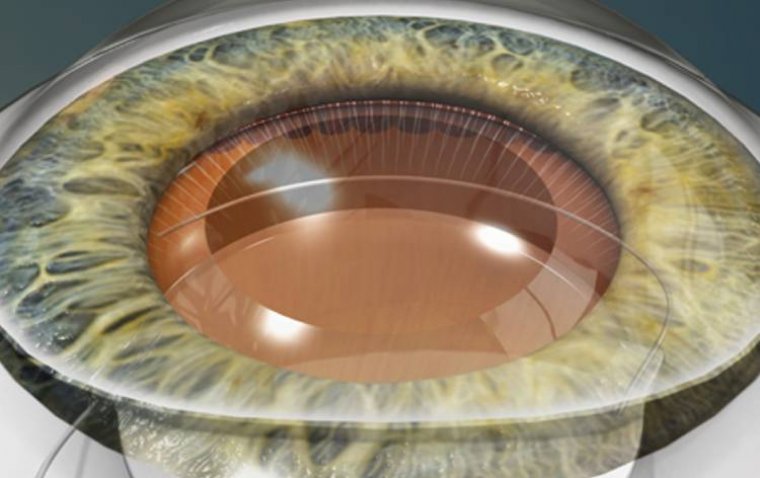
Explaining the Procedure: Extracapsular Cataract Extraction (ECCE)
Cataracts are a common condition where the natural lens of the eye becomes cloudy, leading to impaired vision. One of the effective surgical methods to treat this condition is Extracapsular Cataract Extraction (ECCE), a type of cataract surgery. This guide provides an in-depth look at ECCE, detailing the procedure, benefits, recovery, and comparisons with other techniques.
What is Extracapsular Cataract Extraction?
Extracapsular Cataract Extraction (ECCE) is a surgical technique where the lens of the eye is removed, leaving the elastic capsule covering the lens partially intact. This method contrasts with Intracapsular Cataract Extraction (ICCE) and Phacoemulsification, where the entire lens and capsule are removed or fragmented using ultrasound waves.

Procedure Steps
Pre-Operative Preparation
Before the ECCE procedure, patients undergo thorough pre-operative care, including eye measurements, discussions about intraocular lens (IOL) options, and pre-surgery medications to reduce the risk of complications.
Surgical Procedure
1. Anesthesia: Local anesthesia is administered to numb the eye.
2. Incision: A 10-12 mm incision is made in the cornea or sclera.
3. Lens Extraction: The lens nucleus and cortex are removed while leaving the posterior capsule intact.
4. IOL Implantation: An intraocular lens is implanted in place of the removed lens.
5. Closure: The incision is closed using sutures or allowed to self-seal.
Benefits of ECCE
The primary benefits of ECCE include improved vision clarity and the potential to correct additional refractive errors. This procedure is particularly beneficial for patients with dense cataracts that are difficult to treat with Phacoemulsification.
Recovery and Post-Operative Care
Typical Recovery Timeline
Recovery from ECCE typically spans one to two months. Patients may notice brighter colors and clearer vision within a few days post-surgery. Full visual improvement and stabilization usually take several weeks.
Post-Operative Care
Patients should follow specific guidelines during the recovery phase:
● Avoid strenuous activities to prevent pressure on the eye.
● Use prescribed eye drops to prevent infection and reduce inflammation.
● Attend follow-up appointments to monitor healing and address any complications.
Potential Complications of ECCE
ECCE is a commonly performed surgical procedure with a high success rate, but like all surgeries, it carries potential risks and complications.
● Infection (Endophthalmitis): This is a severe infection inside the eye that can occur if bacteria enter during surgery. It can lead to significant vision loss if not promptly treated with antibiotics or surgery.
● Inflammation: Post-operative inflammation is common and usually temporary, but persistent inflammation can cause discomfort and impair vision. Anti-inflammatory medications are typically used to manage this.
● Elevated Intraocular Pressure (IOP): Surgery can lead to increased pressure inside the eye, which, if not controlled, can result in glaucoma. This requires close monitoring and possibly medications to manage.
● Posterior Capsular Opacification (PCO): This is the most common complication where the remaining lens capsule becomes cloudy over time, leading to blurred vision. It often requires a YAG laser capsulotomy, a simple and quick follow-up procedure to restore clear vision.
● Retinal Detachment: A rare but serious complication where the retina detaches from the back of the eye, which can lead to permanent vision loss if not treated surgically.
● Cystoid Macular Edema (CME): Swelling of the macula, the central part of the retina, can cause blurred or distorted vision. This can be managed with medications, but it may take time to resolve.
● Posterior Capsular Rupture: Tearing of the lens capsule during surgery can complicate the placement of the IOL and increase the risk of other complications, such as retinal detachment.
● Dislocation of the IOL: The implanted lens can move out of its intended position, causing vision problems and potentially requiring additional surgery to reposition it.
ECCE vs. Phacoemulsification
Extracapsular Cataract Extraction (ECCE) and Phacoemulsification are two primary techniques for cataract removal, differing mainly in their surgical approach and recovery. ECCE involves making a larger incision to remove the entire clouded lens in one piece, requiring stitches and leading to a longer recovery time with a higher risk of incision-related complications such as infection and astigmatism. It is particularly beneficial for patients with dense or advanced cataracts that cannot be easily emulsified.
In contrast, Phacoemulsification uses a smaller incision through which an ultrasonic probe breaks up the lens into tiny pieces for suction, allowing for a quicker recovery, fewer complications, and often no need for stitches. This method is preferred for most cataract cases due to its minimally invasive nature, faster visual rehabilitation, and lower risk of complications.
.jpg)
Cost of ECCE Surgery
The cost of ECCE surgery varies based on geographical location, the type of intraocular lens used, and the healthcare provider. Generally, ECCE is more cost-effective compared to advanced laser-assisted techniques.
Advanced ECCE Techniques
● Small Incision ECCE (SICS): Small Incision ECCE (SICS) is an evolution of the traditional ECCE technique that uses a smaller incision, typically around 6-7 mm, compared to the larger 10-12 mm incision used in standard ECCE.
● Manual Small Incision Cataract Surgery (MSICS): MSICS is a refined form of SICS where the lens is expressed through a self-sealing scleral tunnel incision. This technique does not rely on high-cost phacoemulsification machines, making it more accessible in resource-limited settings.
● Femtosecond Laser-Assisted ECCE: This technique incorporates femtosecond laser technology to create precise incisions and fragment the lens before manual extraction. The laser creates an anterior capsulotomy, lens fragmentation, and corneal incisions with high precision.
● Phacoemulsification-Assisted ECCE: This hybrid approach combines elements of both ECCE and Phacoemulsification. The lens is initially softened or fragmented using phacoemulsification techniques, then extracted through a slightly larger incision than that used in standard Phacoemulsification.
ECCE for Dense Cataracts
Extracapsular Cataract Extraction (ECCE) is particularly effective for patients with dense or hard cataracts that are challenging to remove using other methods. The procedure involves making a larger incision in the eye, which allows for the complete removal of the thick, opaque lens. This method is beneficial because it provides the surgeon with better access and control when extracting cataracts that are too solid to be broken up and removed through smaller incisions. As a result, ECCE can significantly improve vision in patients who have severe cataracts, restoring clarity and enhancing their overall quality of life.

Visual Outcomes After ECCE
Visual outcomes after Extracapsular Cataract Extraction (ECCE) are generally very positive. Most patients experience significant improvements in vision clarity and a notable reduction in glare from bright lights following the procedure. The success rate of ECCE surgery is high, with the majority of patients achieving restored vision, often to levels they had not experienced in years. This improvement in visual acuity can lead to enhanced daily functioning and a better quality of
Conclusion
Extracapsular Cataract Extraction (ECCE) is a proven, effective method for treating cataracts, especially in cases where other techniques may not be suitable. With proper pre-operative care, skilled surgical execution, and diligent post-operative care, ECCE can significantly improve visual outcomes and quality of life for patients with cataracts.
References:
(1).jpg)










